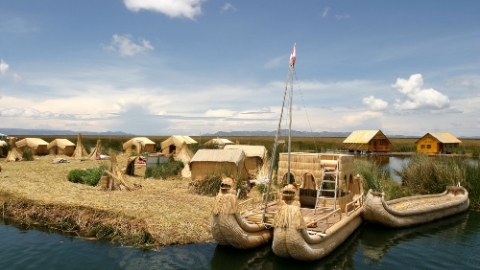The Q'eswachaka Suspension Bridge is hand-woven and has been in existence for at least 600 years. Once part of a network that linked the Inca Empire's most important cities and towns, it was declared a UNESCO World Heritage Site in 2013.

According to a tradition passed down from generation to generation, every year all adults living in the community must join hands to build a new bridge over the Apurimac River, and only men are allowed to directly build the bridge, while women will stay in the upper part of the gorge to weave the smaller ropes.

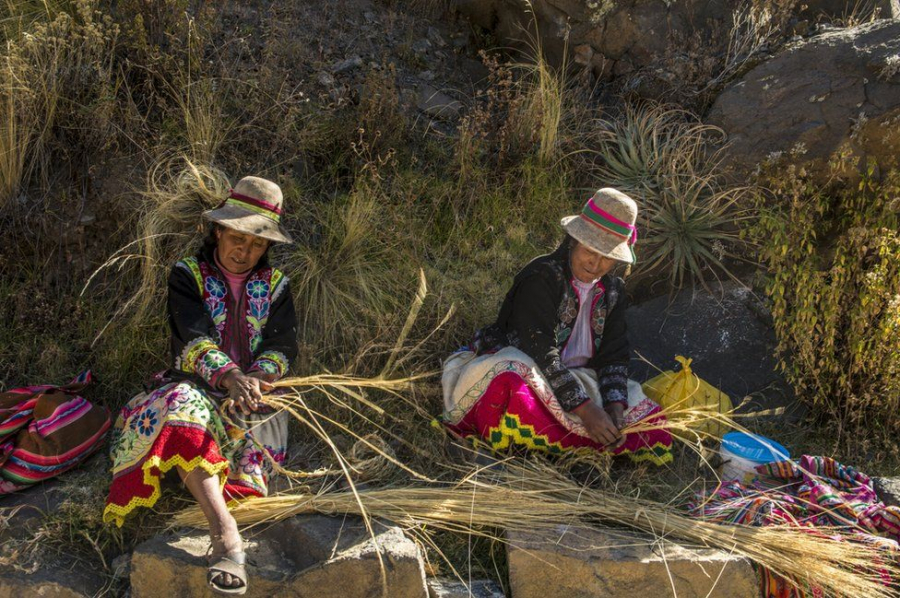
On the first day of rebuilding, men gathered around the old bridge and braided smaller ropes into larger ones. The main support of the bridge came from six three-ply ropes about 30 cm thick, each large rope was made up of 120 smaller ropes.

Every family contributes their share of the effort by weaving each section of the rope by hand from a hard grass known locally as qoya ichu. To make it more pliable, the grass is first pounded at the top with a round stone and then soaked in water.

While everyone was busy building the bridge, some of the other people would cook food on wood stoves brought from the village to the bridge site. Chicken, cuy (guinea pig) and salmon from the Apurimac River were the most popular dishes prepared, all accompanied by locally grown potatoes of various shapes and colors.
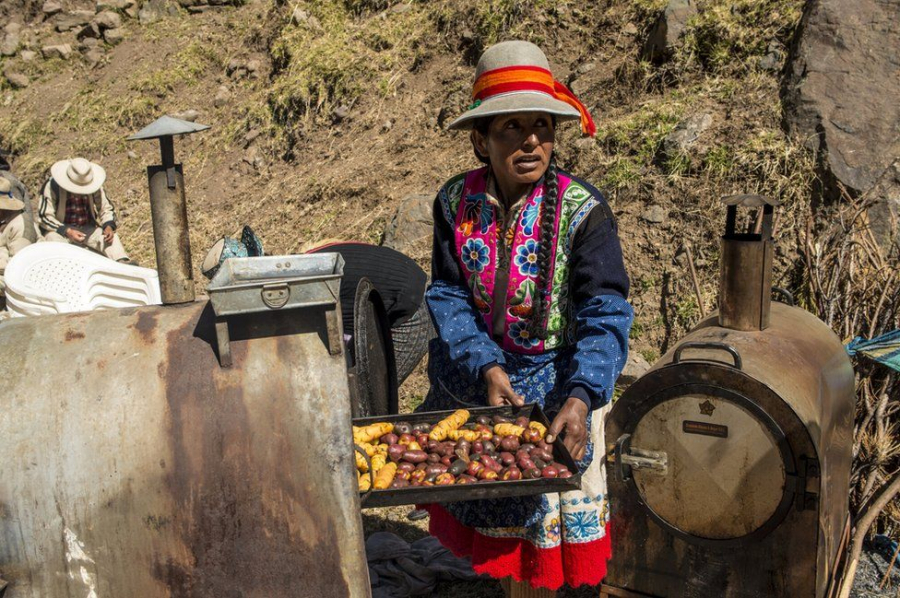
The old bridge was cut down and floated downstream, and since it was made of grass, it would simply rot away without affecting the water source.
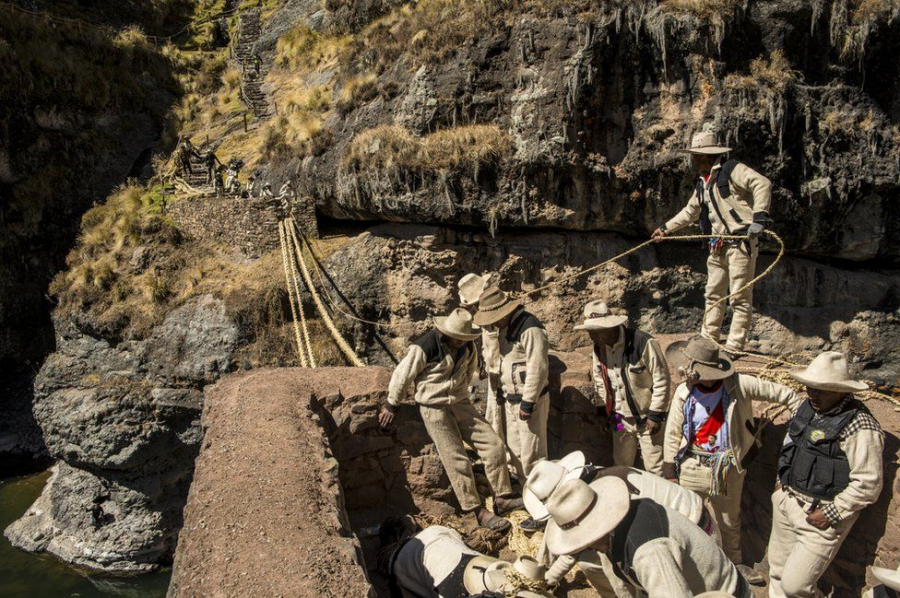
Four of the six woven grass ropes would become the floor of the bridge, and the remaining two would be the handrails. All six ropes would be tied securely to large carved stone supports on either side of the gorge. It would take the men a long time to pull the ropes to the correct tension.

On the third day, a few men who were not afraid of heights had to go up to the bridge to tie small ropes from the handrails to the floor, creating a protective barrier to keep people crossing the bridge safe.
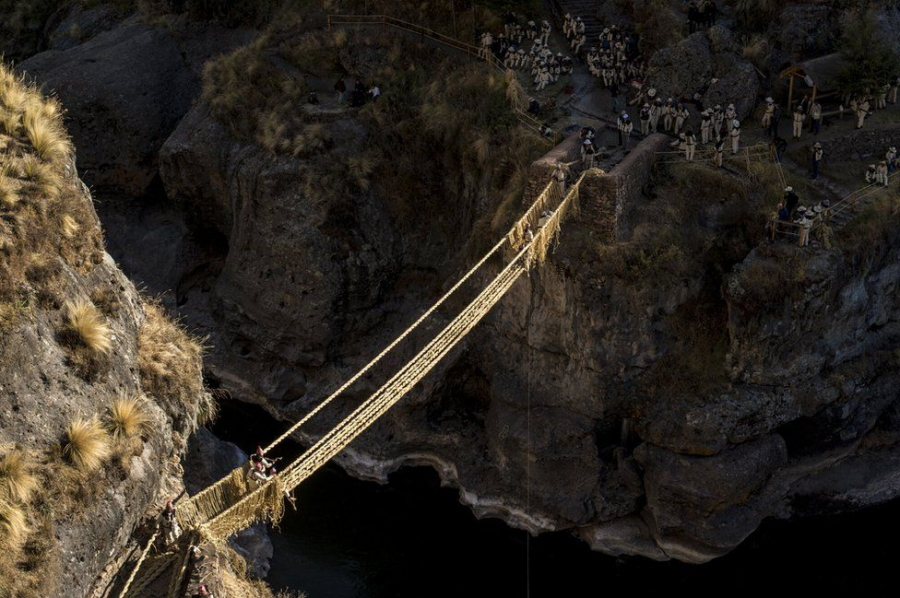
No modern materials, tools or machinery were used in the construction of the bridge - only grass and human power.

The rebuilding of the Q'eswachaka Bridge takes place once a year, and ends with a grand celebration filled with delicious food and joyful music on the fourth day of the repairs, which always falls on the second Sunday of June.






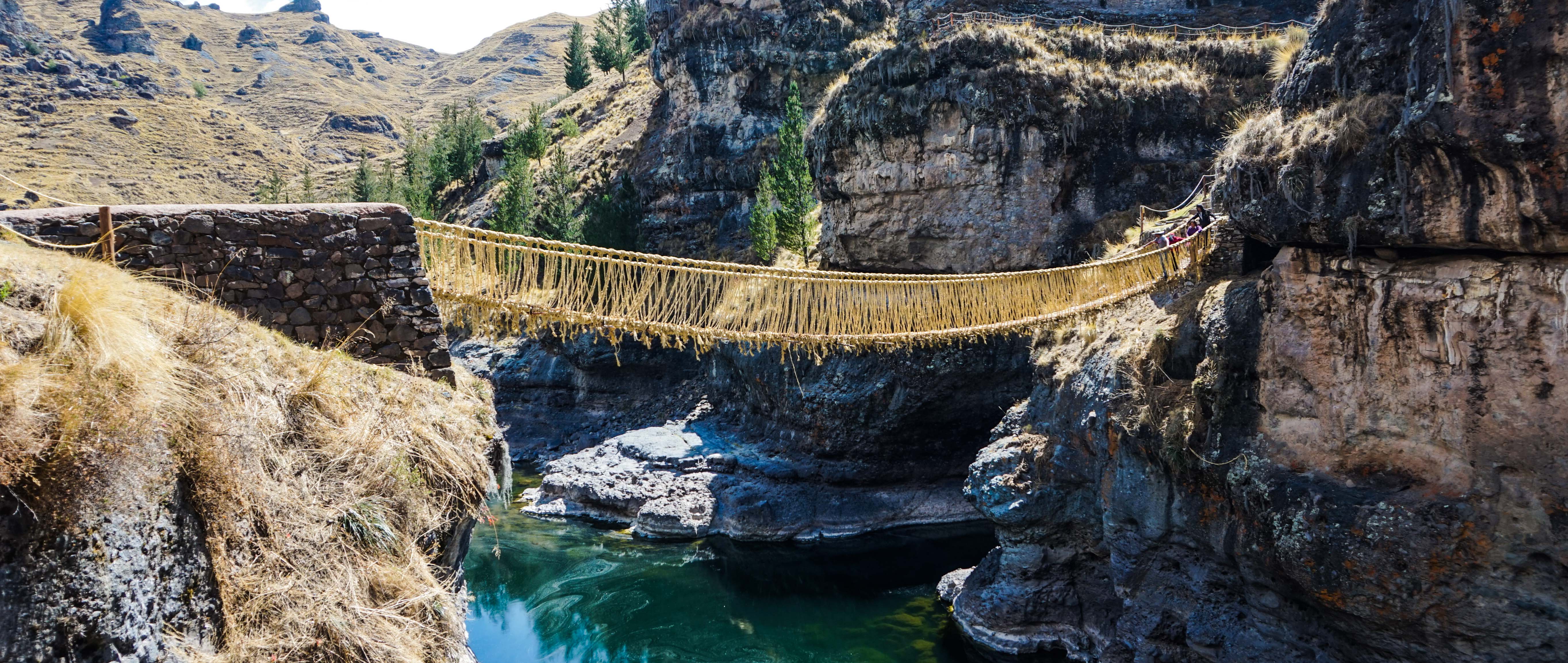














.jpg.jpg)





